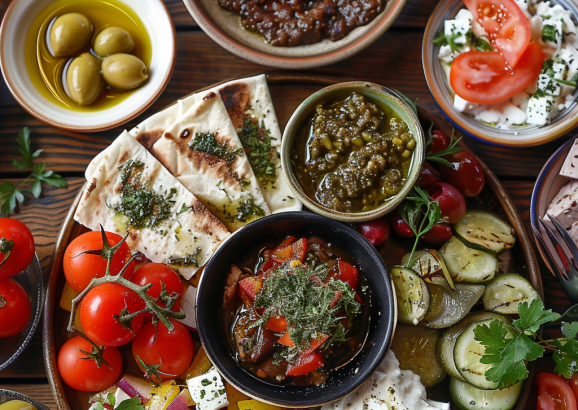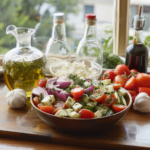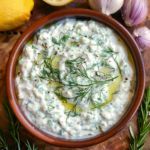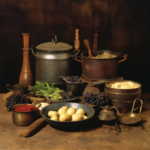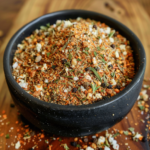Imagine you are sitting on a sun-drenched terrace in Greece, overlooking the sparkling azure sea, with a plate of beautifully presented Greek food in front of you. The vibrant colors, fresh ingredients, and intricate details of the food presentation are not only visually appealing but also a reflection of the rich culinary heritage of Greece.
In this ultimate guide to Greek food presentation, we will explore the art of garnishing, the techniques used by Greek chefs, and how you can effortlessly elevate your own dishes to recreate a slice of Greece in your own home. Get ready to embark on a gastronomic journey like no other, where every bite is an expression of Greek culture and tradition.
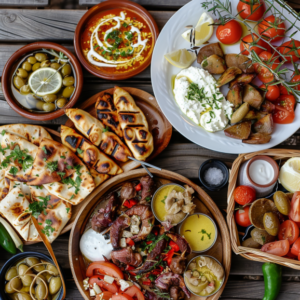
Introduction to Greek Food Presentation
Welcome to the ultimate guide to Greek food presentation! In this comprehensive article, we will explore the various techniques, tools, and tips to create visually stunning and appetizing Greek dishes. Greek cuisine is known for its vibrant colors, artful plating, and harmonious flavors, and we will delve into all the elements that make Greek food presentation so special. So get ready to unleash your creativity and elevate your culinary skills as we dive into the world of Greek food presentation.

Traditional Greek Food Presentation Techniques
Utilizing Eye-Catching Colors
When it comes to Greek food presentation, colors play a crucial role. Greek dishes are bursting with vibrant hues that not only stimulate the appetite but also add visual appeal to the plate. From the bright red of ripe tomatoes to the deep green of fresh herbs, utilizing eye-catching colors is a key technique in Greek food presentation.
Artful Plating and Arrangement
Greek cuisine is as much about the presentation as it is about the taste. The artful plating and arrangement of the dishes elevate the dining experience and visually captivate the diner. Whether it’s the careful placement of ingredients or the creative use of asymmetry, Greek food presentation techniques focus on creating visually pleasing compositions.
Layering Flavors for Visual Appeal
Another technique that sets Greek food presentation apart is the layering of flavors. By incorporating a variety of textures, colors, and tastes, each bite becomes a sensory delight. Whether it’s the contrasting textures of a crunchy spanakopita or the harmonious combination of sweet and savory in baklava, Greek dishes are designed to please both the eye and the palate.
Essential Tools for Greek Food Presentation
Quality Kitchen Utensils
To create stunning Greek food presentations, it’s crucial to have the right tools at your disposal. Invest in high-quality kitchen utensils such as sharp knives, precision tongs, and fine sieve strainers. These tools will not only help you achieve precise cuts and arrangements but also enhance your overall cooking experience.
Decorative Plates and Bowls
Presentation starts with the choice of plates and bowls. Opt for decorative pieces that complement the aesthetic of Greek cuisine. Traditional Greek patterns or earthy-toned ceramics can add an authentic touch to your presentations. Remember, the plate is the canvas, and a well-chosen vessel can elevate an ordinary dish to a work of art.
Garnishing Tools
Garnishes are an essential element in Greek food presentation, and having the right tools for garnishing is a must. Invest in a set of garnishing tools that include peelers, zesters, and herb scissors. These tools will help you create intricate designs, zest citrus fruits, and expertly trim herbs, allowing you to add those finishing touches that make a dish truly visually appealing.
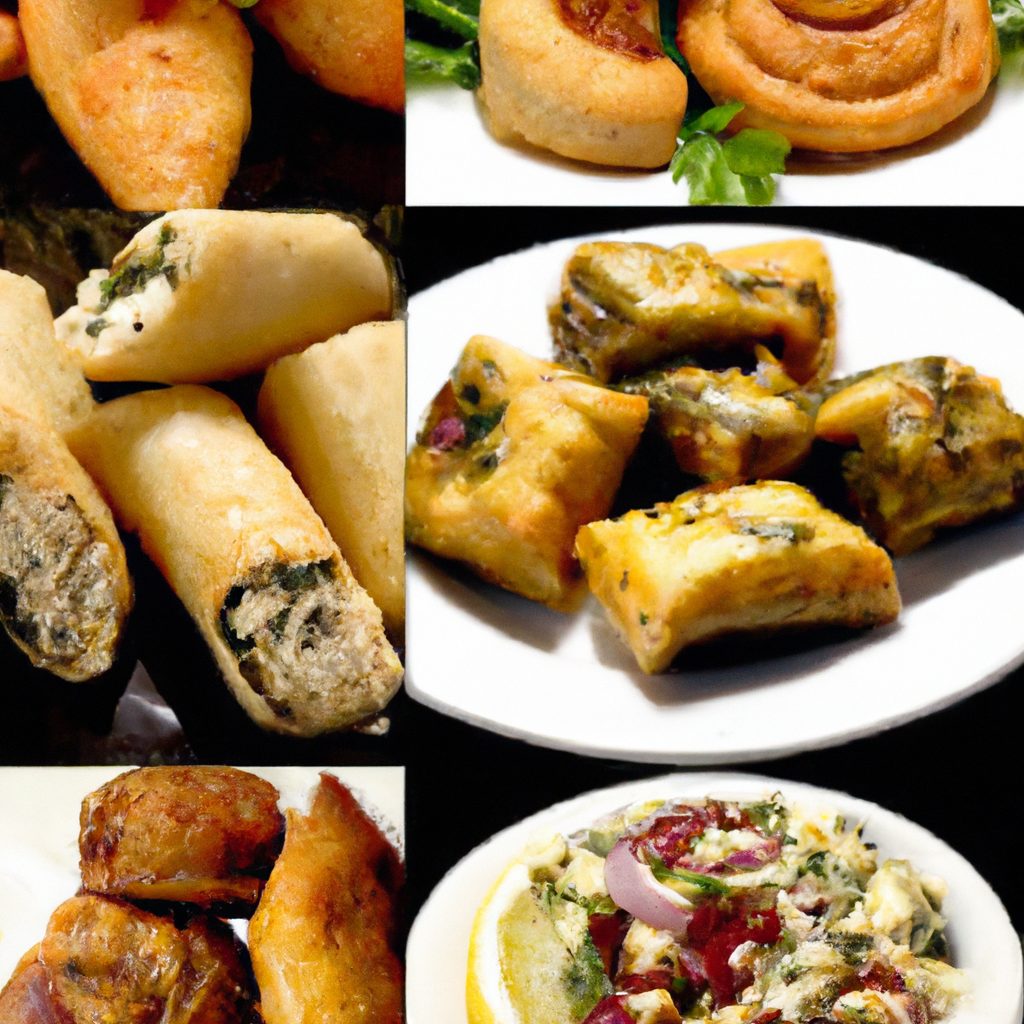
Building a Balanced Greek Food Presentation
Balancing Flavors and Textures
One of the core principles of Greek food presentation is the balance of flavors and textures. Each dish should offer a variety of tastes, from sweet to savory, and a range of textures, from crispy to creamy. Achieving this balance ensures that every bite is a flavorful and satisfying experience.
Incorporating Seasonal Ingredients
Greek cuisine celebrates the use of fresh, seasonal ingredients. Incorporating seasonal produce not only adds depth and flavor to your dishes but also enhances the visual appeal. Freshly harvested vegetables and fruits not only provide vivid colors but also ensure that your dishes are at their peak in terms of flavor and taste.
Diversity in Presentation Styles
Greek food presentation offers a wide range of styles and techniques, allowing for creativity and diversity. From rustic and homestyle plating to sophisticated and contemporary arrangements, Greek cuisine embraces various presentation styles. Experiment with different techniques to find your own unique style and make your dishes stand out.
Mediterranean Colors and Greek Cuisine
Understanding the Importance of Colors
Colors have a profound impact on our perception of food, and Greek cuisine is no exception. Understanding the psychology behind colors can help you create visually appealing presentations. For example, red evokes excitement and appetite, while green signifies freshness and vibrancy. By using this knowledge, you can strategically incorporate colors to enhance the visual appeal of your Greek dishes.
Colors that Complement Greek Dishes
When it comes to Greek dishes, certain colors are particularly complementary. The bright red of tomato-based sauces pairs beautifully with the vibrant green of fresh herbs. The golden hues of baked goods, such as baklava, create a warm and inviting visual contrast. Experiment with different color combinations to find the ones that work best for each dish.
Creating Harmonious Color Palettes
Creating harmonious color palettes is an essential aspect of Greek food presentation. When arranging a plate, consider the balance of colors and strive for a visually pleasing composition. Incorporate contrasting colors to create visual interest, or opt for a monochromatic palette for a sleek and sophisticated look. By paying attention to the colors, you can create stunning presentations that are as pleasing to the eye as they are to the palate.
Creative Plating Techniques for Greek Food
Stacking and Layering
Stacking and layering is a popular technique in Greek food presentation. By carefully layering ingredients, you create visually appealing structures that capture the diner’s attention. Whether it’s a tower of moussaka or a layered dessert, this technique adds depth and dimension to your dishes.
Molding and Shaping
Molding and shaping allows you to create unique and artistic presentations. Molded rice or vegetable shapes add an element of surprise and intrigue to your plate. Using molds and cutters, you can transform ordinary ingredients into visually stunning shapes that enhance the overall experience of the dish.
Using Sauces and Drizzles
Sauces and drizzles are not only a flavorful addition to Greek dishes but also a creative plating technique. With a steady hand, you can create intricate designs or add artistic swirls of sauces that enhance both the taste and visual appeal of the dish. The key is to balance the amount of sauce used, ensuring that it complements the other elements on the plate without overpowering them.
Garnishing as a Key Presentation Element
Choosing Fresh and Flavorful Garnishes
Garnishes are an integral part of Greek food presentation, adding a final touch of freshness and flavor. When choosing garnishes, opt for fresh herbs, microgreens, or edible flowers that complement the flavors of the dish. The garnish should enhance the overall presentation without overshadowing the main ingredients.
Herbs and Spices for Garnishing
Herbs and spices can add a pop of color and an aromatic touch to your Greek dishes. Sprinkle fresh herbs, such as parsley or dill, on top of savory dishes to add a vibrant green accent. Similarly, a pinch of ground cinnamon or a sprinkle of powdered sugar can elevate the visual appeal of desserts. Experiment with different herbs and spices to find the ones that best complement each dish.
Edible Flowers and Citrus Zest
For a touch of elegance and uniqueness, consider incorporating edible flowers and citrus zest in your garnishes. Edible flowers, such as pansies or marigold petals, not only add vibrant colors but also a subtle floral flavor. Citrus zest, whether it’s from lemons or oranges, adds a burst of freshness and aroma that complements a wide range of Greek dishes.
Incorporating Greek Food Presentation in Main Dishes
Beautifully Plated Souvlaki
Souvlaki, a staple in Greek cuisine, can be transformed into a visually stunning dish with the right presentation techniques. Skewer the marinated meat or vegetables on decorative skewers and arrange them on a bed of vibrant greens. Drizzle some tzatziki sauce or sprinkle fresh herbs as a finishing touch. The result is a beautiful and appetizing plate that is sure to impress.
Artistic Moussaka Arrangements
Moussaka, a classic Greek dish, can become a work of art with a little creativity. Instead of the traditional layered casserole, try stacking individual portions of moussaka using a cylindrical mold. Top with a dollop of creamy béchamel sauce and sprinkle with grated cheese. Garnish with finely chopped parsley and serve with a side of fresh salad. This arrangement is not only visually appealing but also offers a unique twist on a beloved dish.
Stuffed Vegetable Masterpieces
Stuffed vegetables are a popular Greek dish, and they lend themselves well to creative presentations. Instead of serving them as individual servings, arrange the stuffed vegetables on a platter, alternating colors and shapes. Drizzle some olive oil and lemon juice over the top and sprinkle with fresh herbs. This visually striking presentation showcases the variety and beauty of Greek stuffed vegetables.
Elevating Greek Dessert Presentation
Arranging Baklava and Kataifi
Baklava and Kataifi, traditional Greek pastries, can be arranged in an artistic manner to enhance their visual appeal. Stack layers of baklava or roll Kataifi into elaborate shapes. Dust with powdered sugar and drizzle with honey for a touch of sweetness. Serve on a decorative plate alongside a scoop of vanilla ice cream or a dollop of Greek yogurt. This presentation elevates the desserts to a visually stunning finale.
Creating Picture-Perfect Galaktoboureko
Galaktoboureko, a semolina custard pastry, can be presented as a picture-perfect dessert. Cut the pastry into individual portions and arrange them on a plate. Dust with a sprinkle of ground cinnamon and garnish with a fresh mint leaf. Serve with a drizzle of warm syrup on the side, allowing the diner to pour it over the dessert themselves. This presentation showcases the layers of the custard and the flakiness of the pastry, inviting the diner to indulge their senses.
Decorating Greek Yogurt Parfaits
Greek yogurt parfaits provide endless opportunities for creative presentations. Layer vibrant fruits, crunchy granola, and smooth yogurt in a glass or jar. Top with a sprinkle of chopped nuts or a drizzle of honey. Garnish with a fresh berry or a sprig of mint. This layered presentation not only looks appealing but also allows the diner to enjoy the various textures and flavors with each spoonful.
Experimenting with Modern Greek Food Presentation
Fusion of Greek and International Elements
Modern Greek food presentation embraces the fusion of Greek and international elements. Experiment with incorporating flavors and techniques from other cuisines to create unique and exciting dishes. For example, you can infuse Greek salad with Asian-inspired dressing or garnish moussaka with Middle Eastern spices. This fusion of flavors and presentation styles adds a contemporary twist to traditional Greek cuisine.
Deconstructed Greek Dishes
Deconstructed dishes offer a creative and visually stunning way to present Greek cuisine. Break down a traditional dish into its individual components and present them in an artful manner. For example, deconstruct a Greek salad by arranging each ingredient separately on the plate. Serve the feta cheese in the form of a foam or use a pipette to add dressing dots. This innovative presentation highlights the flavors and textures of each element, resulting in a memorable dining experience.
Contemporary Serving Vessels
The choice of serving vessels can greatly impact the presentation of Greek dishes. Instead of traditional plates, experiment with contemporary and unique serving vessels such as slate boards, wooden platters, or individual glass jars. These modern presentations add visual interest and allow the colors and textures of the dish to take center stage. Let your creativity run wild and choose vessels that complement the style and aesthetic of your Greek cuisine.
In conclusion, Greek food presentation is an art form that combines vibrant colors, artful plating techniques, and a balance of flavors and textures. By utilizing traditional techniques, high-quality tools, and a creative mindset, you can elevate your Greek dishes to new heights. Whether you’re arranging stuffed vegetables or creating a deconstructed moussaka, each element of the presentation adds to the overall dining experience. So go ahead, unleash your creativity, and let Greek food presentation inspire your culinary adventures.
Mastering the Art of Greek Food Presentation: A Comprehensive Guide
Discover the essentials of Greek food presentation with our comprehensive guide. Learn Greek plating principles for elegant meals, and enhance your dishes with these top presentation tips. Explore various methods of presenting Greek cuisine, understand the aspects of Greek food presentation, and master the elements of Greek food presentation.
Helpful Links
- Greek Moussaka Recipe: A traditional Greek casserole made with layers of eggplant, ground meat, and béchamel sauce.
- Delicious Spanakopita Recipe: A savory pie filled with spinach and feta cheese, wrapped in crispy phyllo dough.
- Greek Salad Ideas: Explore different types of Greek salads to accompany your meal.
- Greek Avgolemono Soup: A comforting soup made with chicken, rice, and a lemon-sauce.
- Gyro Meat Recipe: How to make authentic Greek gyro meat.
- Greek Meze Delicacies: Explore Greek meze (appetizers) recipes.
External Resources for Greek Potatoes
For more inspiration and detailed cooking techniques, check out these external resources:
- Digital Heroes Caffe: A comprehensive guide to Greek cuisine, including tips, recipes, and cooking techniques.






